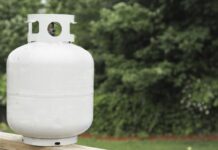While a UPVC window represents a modest fraction of the Australian window market, there is rising interest in this material. More and more people seek energy-efficient and environmentally friendly alternatives to traditional building materials such as lumber or aluminium, and uPVC is the ideal material for the severe Australian climate. As well as being available in a variety of colours (white, black, and silver), uPVC window frames may also be customised with a wood grain profile. Colours may be customised to meet the needs of each person.
The advantages of using UPVC windows and doors may be found in the section below.
- REQUIRES MINIMAL MAINTENANCE
Simply washing the frames with soap and water will keep them looking new for decades. There is no need to sand, refinish, or varnish the wood. As a uPVC window and doors are pretty durable, they can be cleaned to remove even the most persistent of stains if required. uPVC windows and doors are also straightforward to maintain.
- THEY ARE LONG-LASTING
Water, pollutants in the environment, mould, and mildew are all inherently resistant to uPVC by nature. This material is not affected by salt corrosion or rot, and it does not rust, blister or flake. The use of uPVC windows and doors provides a long-lasting alternative to wood and aluminium frame construction.
- STRONG AND DURABLE
uPVC frames are impervious to rot and corrosion and they are unaffected by salt corrosion, making them ideal for coastal areas and residents. They are very robust and UV resistant, which means that they will not fade even when exposed to harsh Australian sunlight.
- SOUNDPROOF TECHNOLOGY
In double-glazed windows, uPVC may decrease noise by up to 40 decibels, or almost 80%, depending on the situation. This may result in a more serene atmosphere at home.
- SAFE AND SECURE
Windows and doors made of uPVC may be equipped with up to ten separate locking points. The employment of this technology in combination with toughened safety/laminated glass would make it practically hard for attackers to obtain access.
- INSULATING SYSTEMS
uPVC is a natural insulator with a low heat conductivity, making it a good choice for outdoor applications. Window and door systems made of uPVC help to insulate a house by keeping air securely sealed inside the system. Thus, you will have less need for air conditioning machines and heaters to keep the temperature in your house stable and comfortable. As a result, using a uPVC window and door preserve energy and help you save money in the long term.
- ADEQUATE VENTILATION
Tilt and turn windows and doors are made of uPVC and are available in various styles. This means that the windows and doors may be opened in both directions, providing the best possible ventilation without creating draughts. With the ability to tilt inward, windows let outside air via the sides of the window while hot air is expelled from the top of the window. Windows may also be opened completely, which makes it possible to clean from the interior of your house with relative ease.
- WIND RETARDANT
uPVC windows and doors are resistant to extreme weather conditions. They may be customised to achieve the highest wind resistance ratings of N5 C4 and Flame Zone BAL.
- IT IS ENVIRONMENTALLY CONSCIOUS
uPVC is a recyclable material that uses fewer resources than metal substitutes and is thus more environmentally friendly. It has a useful life of 40 to 80 years and maybe recycled into various products, including commercial floor tiles, pipes and fittings, plumbing pipes, highway guideposts, and other items of similar construction. uPVC materials are recycled and used in new applications by businesses.










